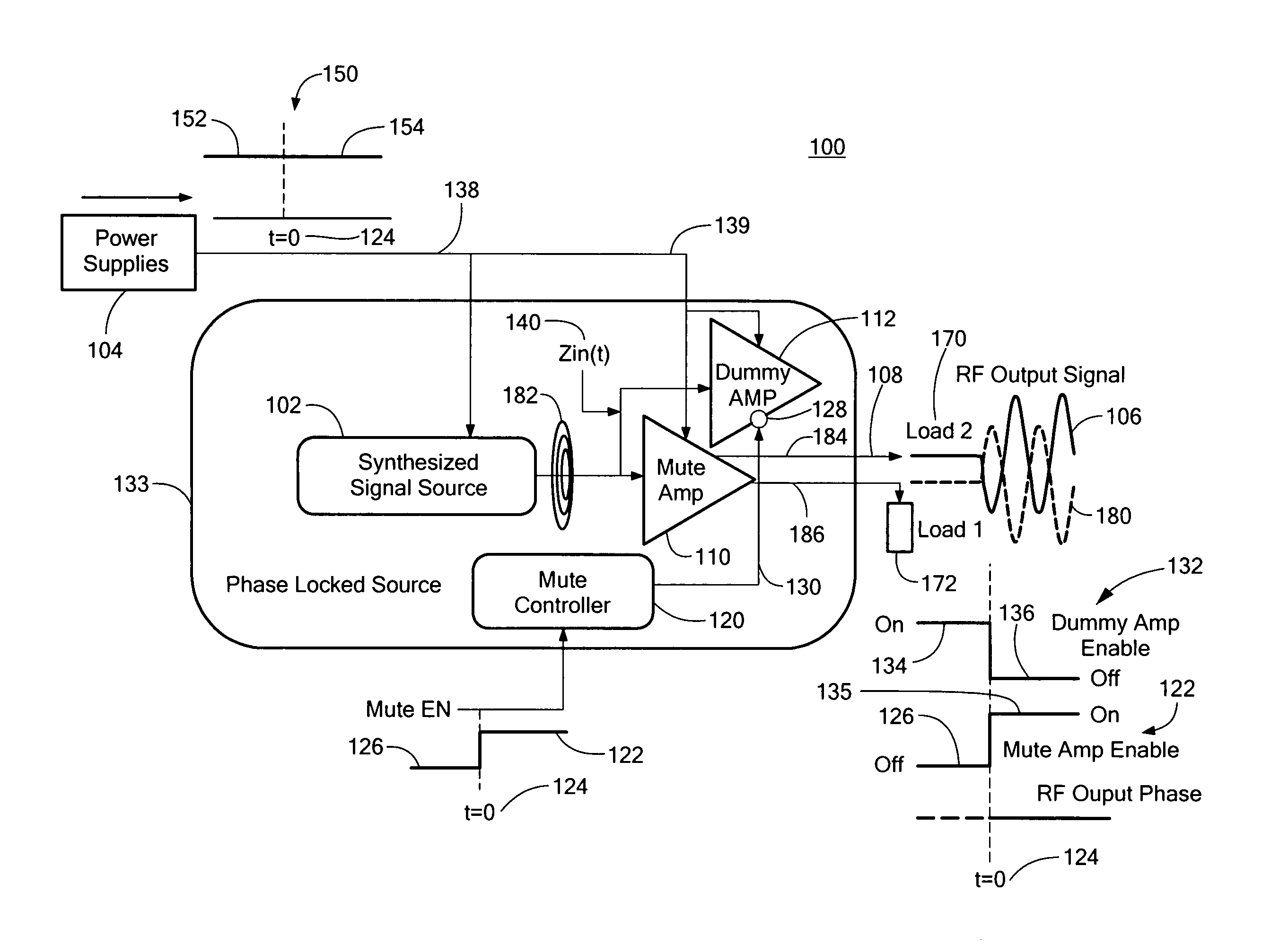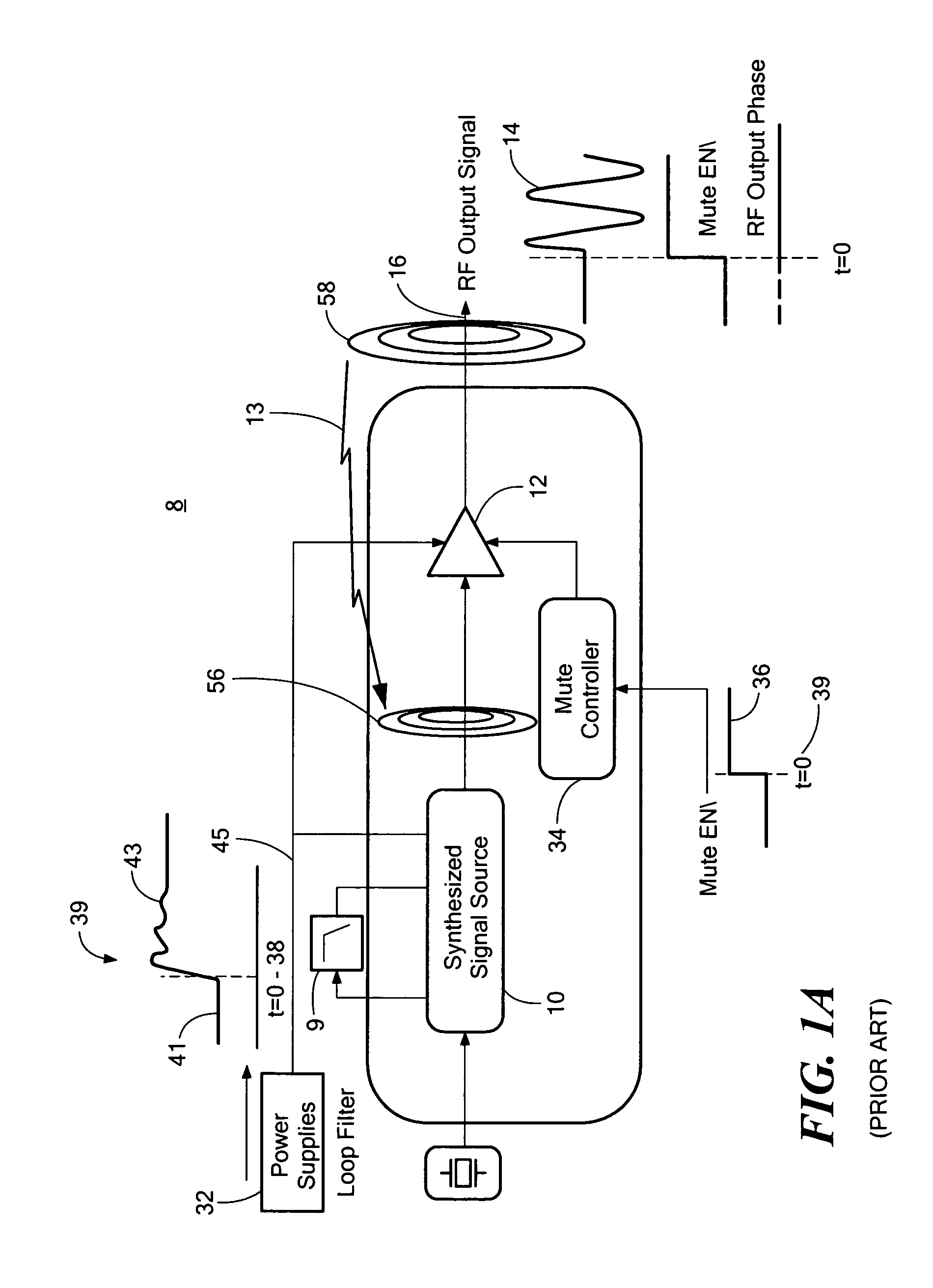Fast turn on system for a synthesized source signal
a compensation system and signal source technology, applied in multiplex communication, gain control, gated amplifiers, etc., can solve the problems of narrow loop bandwidth of high-quality vco's, difficult isolation of vco and mute amplifiers, and disturbance of the phase of synthesized signal source, so as to reduce the phase disturbance of the rf output signal.
- Summary
- Abstract
- Description
- Claims
- Application Information
AI Technical Summary
Benefits of technology
Problems solved by technology
Method used
Image
Examples
Embodiment Construction
[0021]Aside from the preferred embodiment or embodiments disclosed below, this invention is capable of other embodiments and of being practiced or being carried out in various ways. Thus, it is to be understood that the invention is not limited in its application to the details of construction and the arrangements of components set forth in the following description or illustrated in the drawings. If only one embodiment is described herein, the claims hereof are not to be limited to that embodiment. Moreover, the claims hereof are not to be read restrictively unless there is clear and convincing evidence manifesting a certain exclusion, restriction, or disclaimer.
[0022]Conventional synthesized source system 8, FIG. 1A, includes synthesized signal source 10 coupled to mute amplifier 12 configured to generate a phase stable RF output signal 14 on line 16. As disclosed herein, a synthesized signal source, such as synthesized source signal 10, may be as phase lock loop (PLL), phase lock...
PUM
 Login to View More
Login to View More Abstract
Description
Claims
Application Information
 Login to View More
Login to View More - R&D
- Intellectual Property
- Life Sciences
- Materials
- Tech Scout
- Unparalleled Data Quality
- Higher Quality Content
- 60% Fewer Hallucinations
Browse by: Latest US Patents, China's latest patents, Technical Efficacy Thesaurus, Application Domain, Technology Topic, Popular Technical Reports.
© 2025 PatSnap. All rights reserved.Legal|Privacy policy|Modern Slavery Act Transparency Statement|Sitemap|About US| Contact US: help@patsnap.com



